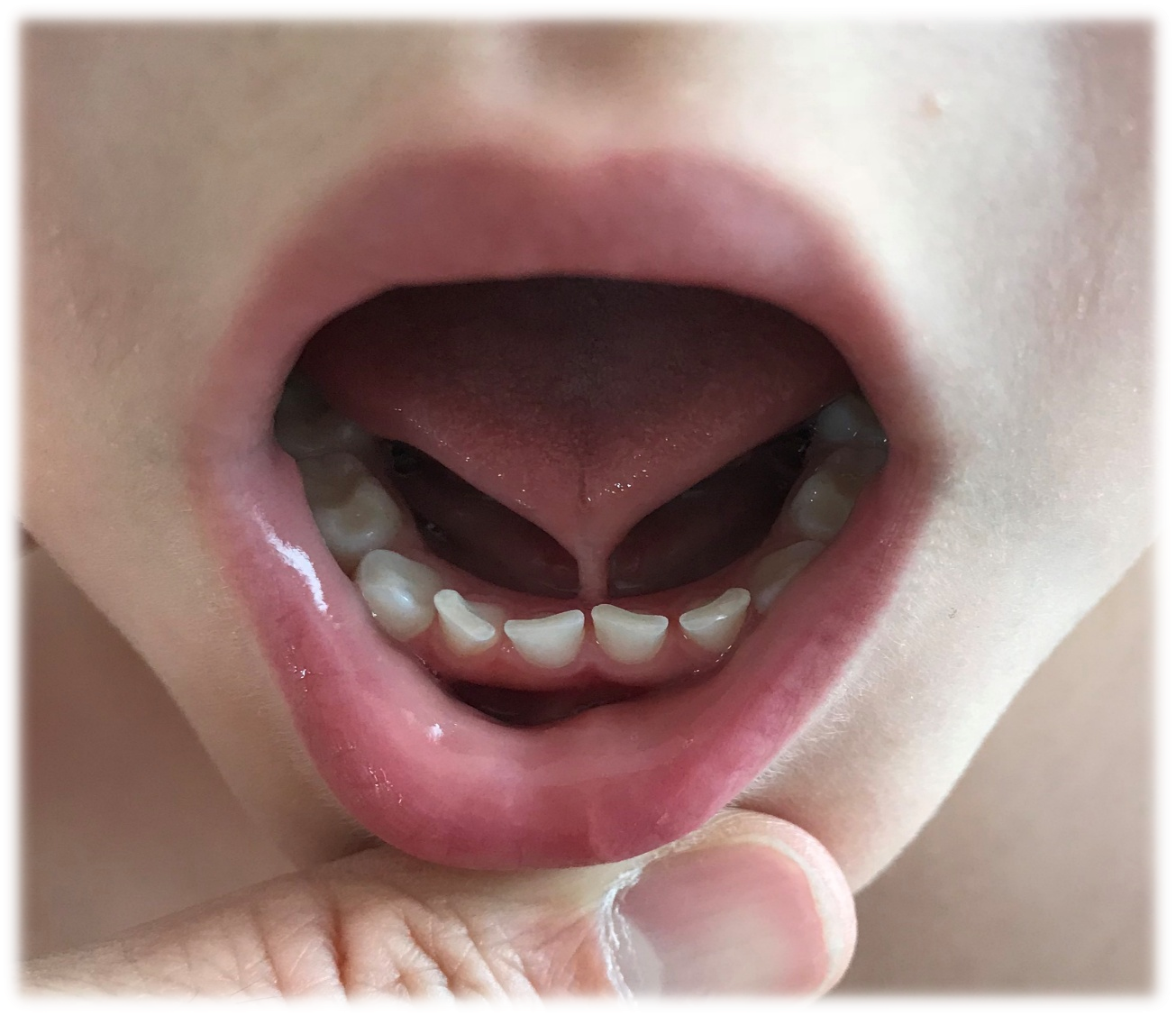Health
Ankyloglossia Symptoms: A Comprehensive Guide to Identifying Tongue Tie
Published
2 months agoon
By
MUNJAL BLOG
Have you ever heard the term “tongue tie” and wondered what it truly means? Medically known as ankyloglossia, this condition is more common than many people realize. Understanding ankyloglossia symptoms is crucial for new parents, adults facing unexplained issues, and healthcare providers alike. This guide will delve deep into the signs of tongue tie, how to distinguish between ankyloglossia vs normal tongue, and address common questions like “do I have a tongue tie” and how to know if baby has tongue tie.
What is a Tongue Tie? Ankyloglossia Explained
A tongue tie occurs when the thin piece of skin under the tongue (the lingual frenulum) is unusually short, thick, or tight. This restricts the tongue’s natural range of motion. There are two primary types: an anterior tie, which is visible near the tip of the tongue, and a more subtle posterior tongue tie, where the tightness is hidden under the mucous membrane closer to the bottom of the tongue. Because posterior tongue tie isn’t as obvious, its symptoms of tongue tie are often missed or misdiagnosed.
So, how common is tongue tie? Studies suggest it occurs in approximately 4-10% of newborns, indicating it’s a frequent finding that requires greater awareness.
Key Ankyloglossia Symptoms and Signs of Tongue Tie
The symptoms of a restricted frenulum can present differently depending on age. Recognizing these signs is the first step toward seeking help.
Symptoms in Babies and Infants
For babies with tongue tie, the impact is immediate, primarily affecting feeding. Key tongue tie symptoms include:
- Trouble Latching:This is the most classic sign. The baby cannot open their mouth wide enough or maintain a deep, effective latch on the breast or bottle. This leads to shallow, frequent feeding that satisfies neither the baby nor the parent.
- Poor Weight Gain: Due to inefficient milk transfer, the baby may not gain weight as expected.
- Prolonged Feeding Sessions: Feedings can take a very long time, only for the baby to seem hungry again shortly after.
- Clicking Noises: A distinct clicking sound during sucking is a common indicator of a poor latch caused by restricted tongue movement.
- Maternal Pain: For the breastfeeding parent, the ineffective latch often results in significant nipple pain, damage, and mastitis due to incomplete milk removal.
- Gumming or Chewing: Instead of sucking properly, the baby may gum or chew the nipple to try to extract milk.
This is where lactation consultants become invaluable. They are often the first healthcare professionals to identify a potential tongue tie based on these feeding challenges.
Symptoms in Children and Adults
While some babies with tongue tie never show severe symptoms, issues can arise later in life. If you’re an adult wondering, “do I have a tongue tie?”, look for these signs:
- Speech Difficulties:This is a major concern. A tongue tie can contribute to articulation problems, particularly with sounds that require tongue elevation like “t,” “d,” “z,” “s,” “th,” and “r.” A speech language pathologist is often consulted to assess and treat these issues.
- Trouble StickingOut the Tongue: The inability to protrude the tongue past the lower front teeth is a clear sign. You might also notice a heart-shaped or notched tip when trying to stick it out.
- Challenges with Oral Hygiene: Difficulty sweeping food debris from the teeth can lead to a higher risk of cavities and gum disease.
- Problems Eating: Challenges with licking an ice cream cone, chewing tough foods, or moving food to the back of the mouth to swallow can be related.
- Social and Emotional Impacts: In older children and adults, being unable to participate in activities like licking lips or playing a wind instrument can cause self-consciousness.
Ankyloglossia vs Normal Tongue: What Does a Tongue Tie Look Like?
Distinguishing between ankyloglossia vs normal tongue isn’t always about appearance alone; it’s about function. However, visual cues are important.
A normal tongue has a frenulum that is long and elastic enough to allow the tongue to:
- Protrude well past the lower lip.
- Lift to touch the roof of the mouth.
- Move side to side to the corners of the mouth without the tip pulling down.
What does a tongue tie look like? You might see:
- The tongue tip is heart-shaped or V-shaped when extended.
- The frenulum is visibly short and tight, tethering the tip to the floor of the mouth.
- In the case of a posterior tongue tie, the front of the tongue may look normal, but the mid-section or back is anchored, preventing full elevation.
A true diagnosis involves a functional assessment by a professional, such as a pediatrician, ear nose and throat (ENT) specialist, or a dentist trained in oral ties.
Addressing the Condition: Treatment and the “Disadvantages of Clipping Tongue-Tie”
When ankyloglossia symptoms significantly impact feeding, speech, or oral health, a frenotomy (or frenectomy) may be recommended. This is a simple, quick procedure to release the frenulum.
However, many parents rightly research the disadvantages of clipping tongue-tie. It’s important to understand the risks, which are minimal but can include:
- Bleeding, infection, or scarring (though rare).
- The potential for the frenulum to reattach if aftercare stretches are not performed diligently.
- The procedure may not fully resolve the presenting issues if other factors are at play (e.g., an underlying oral motor weakness).
The decision to proceed should be made after a thorough evaluation by a qualified provider, weighing these small risks against the significant potential benefits of improved feeding, speech, and quality of life.
Conclusion: Knowing When to Seek Help
Identifying the symptoms of tongue tie is the critical first step. If you are a new parent observing trouble latching and feeding distress, consult a lactation consultant or your pediatrician. If you are an older child or adult experiencing speech issues (a speech language pathologist can help) or other oral restrictions, an evaluation with an ear nose and throat specialist or a knowledgeable dentist is recommended.
Ankyloglossia is a common but often overlooked condition. By understanding its signs and symptoms, you can advocate for yourself or your child to receive the appropriate care and support, leading to improved health and function from infancy into adulthood.
You may like

How Local Couriers Support Small Businesses

Best Replica YSL Bag in Patent Leather

Put Pen to Paper: How Custom Notebooks Can Make a Lasting Impression

From Listing to Sold: Sell A Car in Perth Without the Stress

Unlocking the Benefits of Engineered Steel Solutions for Modern Construction

Discover the Ultimate Comfort and Style of Women’s Underwear in Australia

Unlocking Performance: The Ultimate Guide to Custom PC Builds with Centre Com

Unlocking Opportunities in General Practice Recruitment: A Guide by Global Medics

Hope & Kent: How Snow Removal Technology Is Reaching B.C.’s Most Challenging Terrains

Connecting the Dots in Recruitment: How Skima AI Integrates Seamlessly with Your Hiring Stack

Carol Kirkwood’s Journey: Her Real Age, Husband, Career, and More

Revolutionizing Healthcare: The Emergence of AI-Driven Analytics

How Machine Learning and AI are Redefining the Future?

Aliza Barber: Meet Lance Barber’s Wife, Age, Life, Profile, Career and Net Worth

Evelyn Melendez: Jordan Knight’s Wife Bio, Marriage, Family, Career and Net Worth

Ilan Tobianah Biography: Family, Marriage, Lifestyle, Career and Net Worth

Who was Alice Marrow? Everything to Know About Ice-T’s and His Mother

King Von’s Autopsy Report: The Truth Behind the Tragic Death

Meet Otelia Cox: The Supportive Wife of Tony Cox – A True Fairy Tale Romance

Tea Leoni and Tim Daly Split – A Closer Look at Their Relationship and Breakup

How Local Couriers Support Small Businesses

Best Replica YSL Bag in Patent Leather

Put Pen to Paper: How Custom Notebooks Can Make a Lasting Impression

From Listing to Sold: Sell A Car in Perth Without the Stress

Unlocking the Benefits of Engineered Steel Solutions for Modern Construction

Discover the Ultimate Comfort and Style of Women’s Underwear in Australia

Unlocking Performance: The Ultimate Guide to Custom PC Builds with Centre Com

Unlocking Opportunities in General Practice Recruitment: A Guide by Global Medics

Hope & Kent: How Snow Removal Technology Is Reaching B.C.’s Most Challenging Terrains

Connecting the Dots in Recruitment: How Skima AI Integrates Seamlessly with Your Hiring Stack
Category
Trending
-

 News2 months ago
News2 months agoCarol Kirkwood’s Journey: Her Real Age, Husband, Career, and More
-

 Health2 years ago
Health2 years agoRevolutionizing Healthcare: The Emergence of AI-Driven Analytics
-

 Technology2 years ago
Technology2 years agoHow Machine Learning and AI are Redefining the Future?
-

 Celebrity1 year ago
Celebrity1 year agoAliza Barber: Meet Lance Barber’s Wife, Age, Life, Profile, Career and Net Worth
